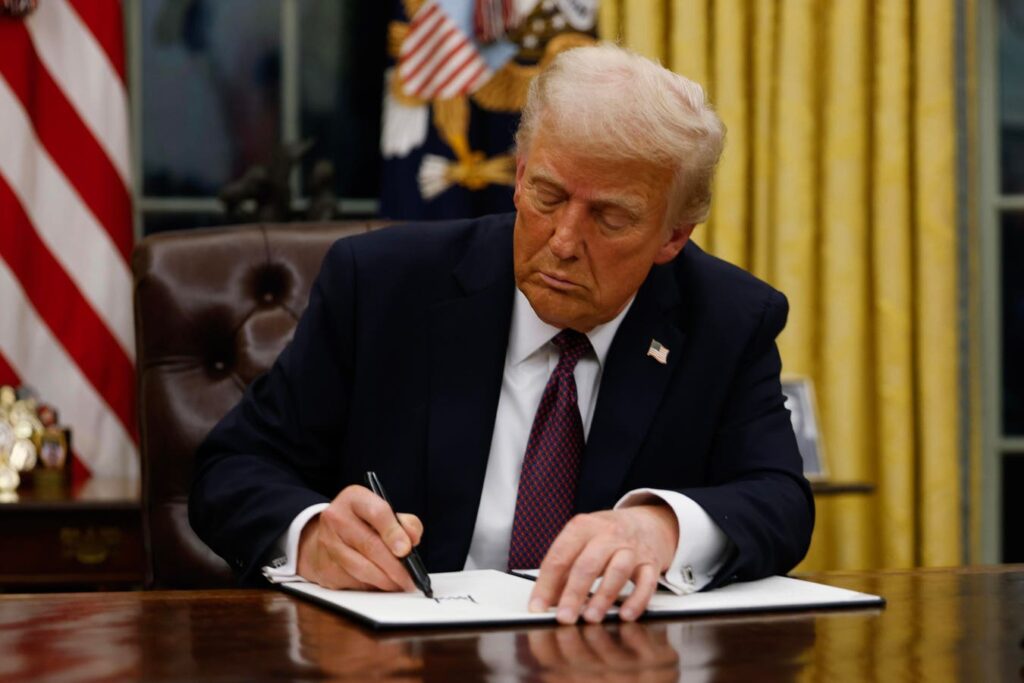Key Takeaways
- Historic Reversal Highlights Market Volatility And Investor Uncertainty Amid Tariffs
- Bond Yields Surge As Global Trade Tensions Intensify Rapidly
- AI Investment At Risk If Recession Cuts Advertising Revenue Streams
Tuesday saw stocks set a new record, though not the type of record that gets investors excited. Instead, stocks staged their biggest reversal lower following a gap opening higher of 3% or more. When markets closed, the S&P 500 had fallen 1.6%. The Nasdaq Composite gave up its biggest intraday gain since at least 1982 according to The Wall Street Journal, closing lower by 2.15%. Small cap stocks had the worst performance, falling 2.7%, while the Dow Jones Industrial Average fell 0.8%.
While the selloff in equity markets has been both swift, severe, and gathers media headlines, what we’re seeing transpire in the bond market is in my opinion more troubling, if not more so. As recently as last week, the yield on the benchmark 10-year note was as low as 3.88%. In premarket, that rate is up to 4.38%. At the longer end of the curve, the story is similar. Rates on 30-year bonds last week touched a low of 4.33%. This morning in premarket, those rates are up to 4.86%. This is caused by a selling of U.S. treasuries. We see this as counterintuitive to what you would think would happen in times of trouble, usually during uncertainty we see market participants turn to Treasuries for certainty and security. This is one of the side effects of true uncertainty and a clue of the seriousness of recession risk in the markets.
The catalyst for the equity selloff continues to be tariffs. Last night was when the Trump administration’s trade tariffs went into effect. At the same time as those tariffs were going into effect, President Donald Trump announced yet more tariffs would soon be announced, this time on foreign pharmaceutical companies. The details of those tariffs are not yet public, but already we’re seeing stocks like Novo Nordisk coming under pressure.
In the meantime, China announced they would counter back against the 104% tariffs imposed on them with an additional 84% on U.S. exports. Canada also announced 25% tariffs on certain automobiles exported from the U.S. that aren’t protected by the United States-Mexico-Canada Agreement.
I think it’s important to take a step back and look at things on a macro level. There are so many moving parts at the moment, it’s hard to keep track of. In addition to what is happening in equities and bonds, we’re seeing oil prices crater. In premarket, crude oil is trading $56/barrel. Gold is up over 2.6% at almost $3,100/ounce. When you put the pieces of this particular puzzle together, what you see is a market repricing itself based on unknowns. And if there is one thing markets hate, it’s unknowns. That is why the VIX hit nearly 58 in premarket.
The repercussions of the vagueness of the situation is also creating the risk of a recession and that has potential implications for things like jobs and artificial intelligence investments. I think the threat to jobs is self-explanatory, but the potential impact on AI is a bit more complicated and deserves an explanation.
Some of the companies making the greatest investment in AI, like Google and Meta Platforms, are reliant on ad revenues. When economies go into a recession, one of the first areas to see cutbacks is advertising. People are spending less money so it stands to reason you would advertise less. If that happens, however, then it’s likely we’ll see less investment in AI. I have spilled more than a few words asking when we will see a return on investment for all the AI spending. That question has yet to be answered. Therefore, it is my belief that if we see a recession, AI investment along with many other areas of investment could become vulnerable to significant cuts.
For today, the options market is pricing in an expected move of 168 points either way. That means we could potentially see a range of twice that or 336 points which is almost 7%. This is a time where it’s easy to panic, but decisions made in a panic rarely turn out well. I always end my columns by telling readers to stick with their investing plans and long-term objectives. That isn’t perfunctory. While I understand it’s hard to not get caught up in the moment, I would make a concerted effort on separating what investments are longer term, from those opportunistic trades are that you may be doing shorter term. This is truly a time to plan the trade.
tastytrade, Inc. commentary for educational purposes only. This content is not, nor is intended to be, trading or investment advice or a recommendation that any investment product or strategy is suitable for any person.
Read the full article here
















